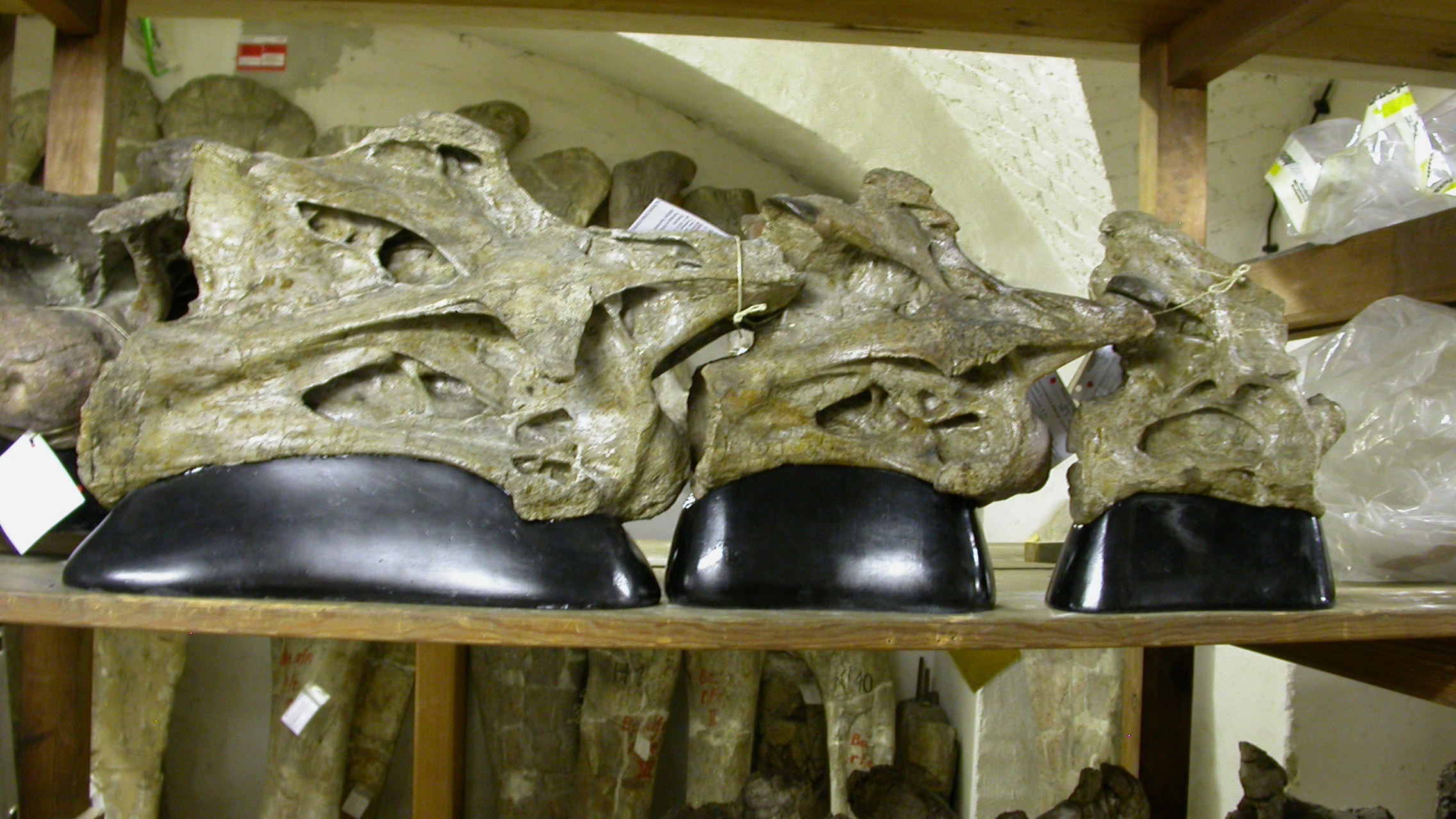Long-necked dinosaurs probably had even longer necks than we thought
Their necks were likely at least 3 feet longer.
Imagine a lumbering long-necked dinosaur — perhaps you've seen these herbivores animated in movies, munching on hard-to-reach leaves, or maybe you've visited a mounted skeleton in a museum. But now, get ready for a reality check: Every sauropod neck you've ever seen is likely wrong, a new study finds.
Surprisingly few complete sauropod necks have been scientifically documented, and even specimens with relatively complete necks often have misshapen bones, distorted from tens of millions of years in the great outdoors. What's more, paleontologists often can't agree where the neck stops and the backbone begins; and many don't factor in how long sauropod necks would be if tissues such as cartilage and fat were included in models.
In short, "don't take too seriously the mounted skeletons that you see in museums," Mike Taylor, a research associate in the Department of Earth Sciences at the University of Bristol in the U.K., told Live Science. If researchers had access to a complete sauropod neck and accurately accounted for its missing cartilage (which rarely fossilizes), sauropod necks could easily be about 3 feet (1 meter) longer than we currently envision them to be, he said.
Related: Photos: 100 million-year-old Tanzania titanosaur had heart-shaped tail bones
Sauropod necks have mesmerized Taylor for upward of 20 years. "They're just fascinating on so many levels — mechanically, biologically, physiologically, ecologically," he said. "They're arguably the most extreme body parts evolved by anything that's ever lived."
However, when he began to study them — for instance to suggest that sexual selection was not the main driver for the sauropod's gratuitously long neck — Taylor realized that many sauropod neck fossils were woefully incomplete.
Dozens of specimens, even "celebrity" sauropods, such as Pittsburgh's Carnegie Museum of Natural History's Diplodocus and Apatosaurus, whose replica casts can be found around the world, and the large brachiosaur at the Natural History Museum in Berlin, have "imperfectly known necks," Taylor wrote in the new study. In specimens uncovered in the 19th and early 20th centuries, missing bone can be difficult to spot due to over-enthusiastic restorers.
Get the world’s most fascinating discoveries delivered straight to your inbox.
Sauropods were big — the largest terrestrial animal, likely Argentinosaurus, may have measured 115 feet (35 m) long and weighed 77 tons (70 metric tons) — so it's not unexpected that complete fossilizations are rare. To fossilize, an animal has to be quickly covered with sediment before predators or the elements lay waste to it, and that's unlikely to happen to a huge beast. What's more, the neck vertebrae of sauropods were fragile and hollow, meaning they could be easily distorted, squashed or broken during the fossilization process, Taylor said.
"It is no accident that the most completely preserved sauropods are small individuals such as … the cow-sized juvenile Camarasaurus lentus," and not a larger beast, he wrote in the study. To date, the longest known necks of titanosaurs, or supersized sauropods, belong to Patagotitan, Puertasaurus and Dreadnoughtus, and are thought to be around 32 feet (10 m) long, but the material is meager. Patagotitan has only three known neck vertebrae, and Puertasaurus and Dreadnoughtus have just one apiece.
Sometimes, vertebrae are missing or jumbled, making it hard to decipher how long the neck was. "In mammals it's really easy to tell because there are seven cervical vertebrae in the neck and they don't have ribs attached [to them]," Taylor said. But in sauropods, some neck vertebrae attach to the ribs, making it hard to see where the neck ends and the trunk begins in some dinosaurs.
The Carnegie Diplodocus — nicknamed "Dippy" — appears as a cast in museums all over the world, including in London, Berlin and Paris, but even this well-known dino's neck is suspect. In 1900, it was reported to have 11 cervicals, but this number was later adjusted to 15, which is what modern replicas show. But it's possible that Dippy had even more cervicals, or maybe fewer, given that one of them may have been misassigned, Taylor wrote in the study.
One improvement would be to better inform the public about what's known and what's just a guess; for instance, highlighting the known bones in a different color in reconstructed museum mounts, Taylor said.
Understanding the current limits of our knowledge regarding sauropod neck is important, especially when it comes to constructing family trees based on anatomical features, said Femke Holwerda, the Elizabeth Nicholls postdoctoral research fellow at the Royal Tyrrell Museum of Paleontology in Alberta, Canada, who was not involved with the study.
The study was published online Jan. 24 in the journal PeerJ and detailed on Taylor's blog, SV-POW.
Originally published on Live Science.

Laura is the managing editor at Live Science. She also runs the archaeology section and the Life's Little Mysteries series. Her work has appeared in The New York Times, Scholastic, Popular Science and Spectrum, a site on autism research. She has won multiple awards from the Society of Professional Journalists and the Washington Newspaper Publishers Association for her reporting at a weekly newspaper near Seattle. Laura holds a bachelor's degree in English literature and psychology from Washington University in St. Louis and a master's degree in science writing from NYU.



